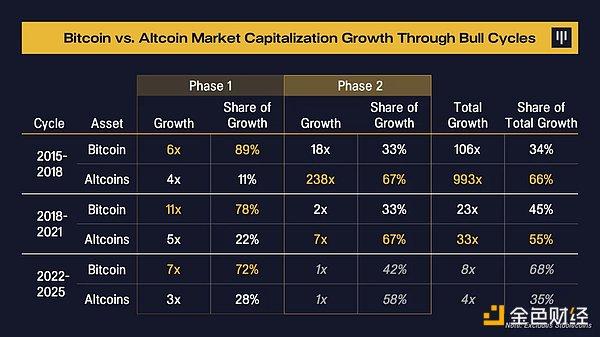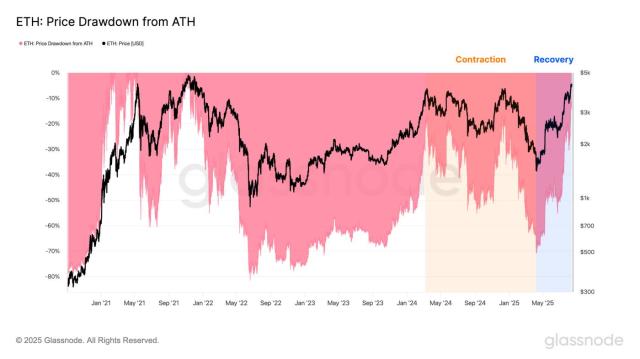*This article was written and drafted by kowei, and then collated and synthesized in collaboration with GPT o3 "In-depth Research"
The role of transaction medium: blockchain as an "amusement park"
Medium of exchange refers to the function of currency as a medium of exchange. For public blockchains, this is reflected in the fees users pay to use the blockchain and the revenue generated by block producers (miners/validators). Here, I'll use the analogy of a public blockchain as an amusement park: blockchains sell block space and transaction ordering rights . The former is like an amusement park ticket (basic transaction fees), while the latter is like an express pass to the rides (Maximal Extractable Value, or MEV , the additional value gained by ordering transactions).
In the economic design of modern public chains like Ethereum, base transaction fees (entry fees) are typically partially burned to reduce token circulation (for example, through the EIP-1559 mechanism), while MEV revenue (fast pass fees) is increasingly distributed to block validators and stakers. Both constitute the public chain's "real revenue," and the public chain's native token serves as the medium of exchange for these fees. It's worth noting that as blockchain scaling technology advances and public chain TPS (transactions per second) continues to rise, the importance of base transaction fees may decline. In the long term, with the exception of Bitcoin, almost every public chain has the potential to exceed 10,000 transactions per second. Therefore, effectively extracting MEV from public chain revenue will become increasingly critical in the future .
From the perspective of an "amusement park," maximizing public chain revenue requires two key priorities: first, ensuring as many people as possible enter the park , and second, ensuring those willing to jump the queue for privileges pay a premium . In blockchain terms, this translates to maintaining low transaction fees to lower the barrier to entry and increase transaction volume; second, fostering more high-value activities on the chain, allowing players willing to pay for early access to transactions to contribute more MEV revenue. The former requires ample scalability and a sufficient number of applications to meet high transaction throughput requirements. For example, developing simple on-chain games, social applications, and even digital certificates and supply chain scenarios generates massive transaction volumes (even if the economic value of individual transactions is low, they can still generate significant transaction fees). The latter requires diverse and vibrant economic activity within the public chain ecosystem to make arbitrage, liquidation, and leveraged trading profitable, leading to a greater willingness to pay high priority fees. However, currently, most public chains have fewer than ten types of smart contracts with real users . It can be said that many chains lack a rich selection of "attractions," making it difficult to attract long-term user engagement. This is also the direction that public chain developers need to work towards: increasing the diversity and stickiness of applications can raise the ceiling of MEV extraction.
From a strategic perspective, different public chains have different trade-offs when it comes to the "amusement park model." For example, Ethereum has chosen to increase scalability through solutions like Layer 2, maintaining the decentralization and security of Layer 1 while diverting a large number of transactions to Layer 2, allowing users to enjoy lower fees. This means that Ethereum Layer 1 itself may carry a lower daily transaction volume, but it still extracts a portion of transaction fees through mechanisms such as Rollup settlement, while retaining higher-value transactions and MEV opportunities on Layer 1. Especially after the introduction of Base Rollup, even Layer 2 MEV may be captured by Ethereum Layer 1 validators.
Solana, a high-performance single-layer public chain, is more like building a super-large, directly operated amusement park, offering high TPS and low fees directly on L1 to accommodate all traffic. In the future, as public chains pursue transaction media functions, they will need to pursue scalability, low fees, and MEV returns . This requires attracting a large number of users while ensuring that ecosystem participants (especially token holders and stakers) can share in the dividends of trading activities. This allows the public chain's native token to increase in value, much like "shares," as the park prospers.
The Challenge of Unit of Account: Blockchain as a Casino
The second function of currency is as a unit of measurement (pricing) , meaning what people use as a benchmark for accounting and pricing. In the crypto world, I compare it to a public blockchain being a casino that issues chips . Public blockchain tokens are like casino chips. Only when people are willing to use these chips to price and trade can they earn the so-called moneyness premium .
In the early days of the crypto community, a currency-based mindset was prevalent: veterans often used BTC or ETH to measure the returns of other assets, such as the multiple of a particular Altcoin increase relative to BTC/ETH. However, as the market grew and matured, the adoption of stablecoins (particularly USD-denominated stablecoins) soared, and expectations shifted almost entirely to the USD standard . Exchange quotes, order books, and AMM pools are now universally denominated in USD, leading to a gradual decline in the practice of using BTC/ETH as the benchmark for pricing.
Today, the majority of cryptocurrency transactions involve stablecoins, with approximately 99% of the stablecoin market capitalization pegged to the US dollar. Crypto asset transactions are effectively denominated in US dollars . The old vision of Bitcoin as the "world's reserve currency" has been reversed by reality: the crypto market is becoming increasingly heavily dollarized . This shift has altered investors' motivations for holding public chain tokens: beyond using a small amount of tokens to pay transaction fees, there's little reason for crypto users to hold a large number of a particular public chain's tokens for the long term, especially when the token lacks sufficient "real yield." Furthermore, to date, no public chain has achieved long-term deflation or high cash flow returns through transaction fees and MEV revenue, resulting in a lack of intrinsic purchasing motivation for many public chain tokens and poor performance.
Theoretically, a popular "Fat Protocol" argument posits that tokens on the base protocol layer (L1) will be more valuable than a single application due to the value they carry across a wide range of applications. However, in practice, it's become clear that the underlying technology alone isn't enough to give tokens a monetary premium . For public chain tokens to become a unit of account that people are willing to hold and trade, they must be priced in large-scale applications or asset pools . In other words, a breakout new application is needed to lure users into the "casino" and attract a flood of off-market funds (US dollars) into the ecosystem, depositing them in the tokens. Only then can public chain tokens achieve a premium based on their pricing function. Looking back at crypto history, each wave of market frenzy has almost always coincided with a similar application scenario. For example, during the 2017 ICO boom , people rushed to use ETH to participate in project financing, driving up demand for the blockchain token ETH. During the 2020-2021 DeFi and NFT craze , users hoarded and used related public chain tokens (ETH/SOL) in large quantities for liquidity mining and NFT purchases. And during the recent meme coin craze , speculators flocked to Solana to buy memes, driving up transaction volume and burn fees on the underlying chain. These examples illustrate that when a crypto application becomes popular, it often forms an internal circulation economy based on a currency . Whether investing in a new currency through an ICO, settling returns in DeFi using tokens, or using the mainnet currency as a medium for buying and selling NFTs/meme coins, the application forces funds to be converted into specific public chain tokens for valuation and trading , thereby temporarily giving these tokens a higher monetary premium.
Interestingly, some crypto analysts have further categorized these waves of mania using the analogy of a "Ponzi scheme." For example, the three-sector theory proposed by the well-known crypto influencer "Crypto Wei Tuo" posits that the ICO craze is a " splitting scheme " (constantly splitting new coins to attract incremental capital), the DeFi wave is a " dividend scheme " (a linear dividend return from a one-time investment, such as liquidity mining), and the rise of meme coins is a " mutual aid scheme " (a model in which capital circulates among participants). Regardless of the name, the essence of these "sectors" is to form an internal circulation based on the currency : during ICOs, people hold ETH and other assets to subscribe to new coins; DeFi protocols issue tokens as rewards to attract deposits; and meme coins encourage people to buy in, hoping that later comers will pay a higher price. Each wave brings a large amount of capital from the outside world into the market, which is then deposited into the tokens of the relevant public chain . Therefore, for public chain ecosystem strategies, how to nurture or seize the next explosive application is crucial—it will be our "ace gambling table." Regardless of the scenario, if an application priced and exchanged using a public chain token emerges and accumulates significant value, it will truly give the token strong "monetary properties." Conversely, if the public chain ecosystem lacks a compelling killer application, it will be difficult for the public chain token to escape its niche role as a "transaction fee/gas fee." For public chain projects like us, this means actively incubating the ecosystem , attracting developers, and providing incentives (such as ecosystem funds and hackathons) when necessary, in the hope that the next tipping point will occur on our chain.
Faith in Store of Value: Blockchain as a “Church”
The final function of money is as a store of value : people are willing to hold onto it for the long term, viewing it as a way to preserve and increase value. In the crypto space, this quality is more closely tied to faith . I use a church as an analogy: a church symbolizes faith and loyalty, a group of believers who adhere to certain values over the long term, seeking neither quick returns nor unwavering faith in the future. Cryptocurrencies, in turn, are assets that people buy and never sell , their prices primarily driven by faith, not short-term cash flow or speculative enthusiasm.
From an investment perspective, whether it's stocks or cryptocurrencies, the direct cause of price increases is simply that there are more buyers than sellers . The reasons driving these purchases vary widely: some focus on cash flow repurchases (treating tokens like amusement park equity, backed by tangible returns), while others are obsessed with the thrill of gambling (using tokens as casino chips, hoping for overnight riches). However, the most powerful buying motivation in the crypto market often stems from pure faith—the belief that there will be more buyers in the future (early believers selling to later believers) . Bitcoin is a classic example: its early narrative of digital gold and its positioning as a decentralized safe-haven asset fostered a legion of "believers" who steadfastly hold onto their positions, regardless of bull or bear markets. This conviction has sustained Bitcoin through countless market crashes and helped it grow stronger. Even among non-Bitcoin crypto projects, there are many examples of these "church of faith" approaches : established coins like XRP, ADA, and HBAR , for example, each garnered a loyal following who long believed their projects would ultimately change the world (even without a clear application in the immediate future). Take XRP (Ripple) as an example. While the XRP Ledger's lack of smart contracts has limited its ecosystem development, and many applications on the XRP Ledger don't even require XRP tokens, this hasn't prevented XRP from consistently ranking among the top cryptocurrencies by market capitalization (rising to third place by mid-2025). This is due to the unwavering belief among numerous believers (the XRP ARMY) that XRP will eventually replace SWIFT as the new standard for global remittances. Their dedication has even become a self-fulfilling prophecy: as the token's price rises, Ripple's capital is further ample to expand banking partnerships and invest in and acquire traditional financial infrastructure, bringing the XRP vision closer to reality.
This "store-of-value church" approach doesn't focus on network effects or explosive growth in current usage ( it prioritizes the Lindy Effect over Metcalfe's Law ). The Lindy Effect suggests that the longer something persists, the longer it's likely to persist in the future. Applied to the crypto world, a project that survives multiple market cycles and maintains strong community engagement actually strengthens public confidence in its long-term viability over time . Therefore, "church"-like projects often win not by short-term user growth but by longevity and enduring trust . As long as believers believe in the project's narrative of " ultimately changing the world ," even a lack of revenue and adoption won't hinder its narrative. The token price will be supported and may even rise steadily as the number of believers grows. This model doesn't focus on ten-year revenue like an amusement park, nor does it require constantly inventing new gimmicks to attract short-term attention like a casino. Instead, it pursues a moat that "lasts for millennia."
It's undeniable that patience and trust are the scarcest qualities in the crypto. In a market where information is constantly changing and investors are generally impulsive and driven by profit, building a fortress of faith is no easy feat. But once successful, faith itself becomes the strongest moat . Open-source projects can easily replicate their functionality, while their actual business models or exchange liquidity rarely provide lasting barriers (after all, liquidity and access are largely controlled by giants like Tether and Binance). In contrast, community faith and consensus cannot be easily copied or plagiarized—it's an intangible asset and a project's most powerful weapon. We often find that some technically mediocre, established coins have managed to survive for years thanks to the steadfast support of a loyal fanbase and a self-reinforcing narrative cycle. This reminds us that when formulating public chain development strategies, it's crucial to prioritize shaping vision and values and fostering the conviction of long-term holders. For example, the Ethereum community's embrace of concepts like "the global computer" and "ETH is money, Internet money" is, to some extent, driven by faith, enhancing the token's store of value.
It's important to distinguish between faith and short-term speculation . While faith may simply be a seasonal trend (like a hot topic), with speculators jumping in to chase the hype and then leaving when the tide turns, faith in the former is a long-established, shared belief with self-fulfilling and self-reinforcing qualities. Believers will buy on dips and hold on, their very presence driving up the price floor. Once this long-term mindset is established, new entrants are often more easily assimilated into the next wave of believers. "XRP's success is due to its fervent following, unmatched by other crypto projects—it's fervently promoted by numerous community figures and widely recognized within traditional financial circles." It can be said that once faith is established, market perception, positioning, and resource allocation tend to favor the asset . This internal and external positive feedback loop is the most captivating and powerful aspect of the church model.
Conclusion: Future Trends and Strategic Considerations of Public Chains
In summary, we've analyzed the different aspects of public chain tokens as a medium of exchange, unit of account, and store of value, using the metaphors of "amusement park," "casino," and "church." In practice, a successful public chain doesn't necessarily have to choose a single path; rather, it requires comprehensive considerations and balanced development :
- As a medium of exchange , we must ensure that the blockchain is user-friendly and usable . This means maintaining high technical performance and scalability, while also developing a reasonable fee mechanism economically to ensure the native token consistently participates in value capture. Conversely, if our chain cannot provide sufficient TPS to support users and fails to share transaction revenue with token holders through protocol design, the token's fundamentals will be weak. Fortunately, the industry is still in its early stages of exploration in this area, allowing us to leverage the experience of pioneers like Ethereum and Solana and continuously adjust our strategy. Regarding scalability, whether to pursue Ethereum's modular approach (L2 ecosystem) or Solana's single-layer, optimized approach requires a careful consideration of our community positioning and technical expertise.
- Regarding pricing units , public chain projects need to proactively build an ecosystem "table." Without applications, no one will hold large amounts of tokens for the long term. We should consider: Can we launch a service that exclusively accepts payments in our own chain's tokens? Can we foster the implementation of a phenomenal application on our own chain, thereby attracting an influx of external capital? This involves strategic decisions regarding business development and ecosystem investment. For example, some public chains are focusing on GameFi/NFTs , as the gaming and digital collectibles sectors offer opportunities to create an internal circulation economy that is token-friendly. Others are delving deeply into DeFi , hoping their tokens will become underlying collateral for financial transactions or a medium for transaction fees. We also need to monitor industry trends (such as the aforementioned RWA and social finance ) and, when appropriate, fully capitalize on potential breakout points. However, we must also be wary of the risk of bubbles bursting after short-term trends, and avoid over-reliance on a single narrative within the ecosystem.
- In terms of value storage, beyond technology and applications, we must cultivate the hearts and minds of the community . This requires us to cultivate a clear and compelling vision, maintain a positive community culture, and bolster token holders' confidence in the project's long-term value. Regular development progress updates, candid communication, and a strong emphasis on our original mission are key to building trust. Time is also crucial: as a project ages, its survival itself becomes a positive signal (the Lindy effect). During this process, we must avoid overdrawing community trust through impulsive pursuits, as once faith is shaken, rebuilding it is difficult. Instead, steadily building reputation and proven results will transform early believers into our strongest supporters, and through word-of-mouth, we will attract more long-term investment.
Looking ahead to the next few years, the public blockchain sector is likely to continue its development along a dual-track trajectory: one driven by technological application, aiming to increase transaction volume and revenue, thereby strengthening the intrinsic value of tokens ( amusement parks and casinos ); the other driven by community consensus , strengthening the culture of long-term holding and endowing tokens with certain safe-haven and store-of-value properties ( churches ). These two developments are compatible and, indeed, indispensable. Only public blockchain projects that have established a strong moat in both their business models and their underlying values will be able to remain undefeated amidst the fierce L1 competition and regulatory scrutiny.
As the Asia lead for the IOTA public blockchain ecosystem, I'm writing this memo-style analysis as a reminder to myself: While technological innovations advance rapidly, economic principles and human nature remain the core drivers of token value. When we discuss TPS, TVL, and hype the next big thing, let's return to these three fundamental questions: Why is our token widely used for exchange? Why is it a price unit? Why is it worth holding for the long term? Only by answering these three questions and putting them into practice can our public blockchain truly move from a flash in the pan to a lasting legacy. May we build more than just a chain, but a vibrant and enduring crypto metaverse: creating value like an amusement park by day and a dazzling casino by night, its foundations as solid as the towering cathedral of faith. This is my vision, and the direction we all strive for.








